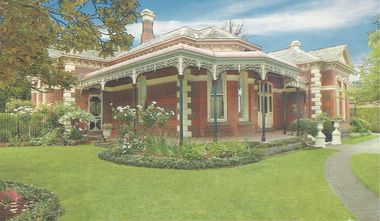Spray Painting Raw Plasterboard (Drywall)
As usual, Julie and I elect to do too many things oursleves. And so it was with painting. We spray-painted the raw plasterboard (called "drywall" in the USA) with a high pressure spray-gun.

Fortunatley my wife Julie works in the paint industry, so we were able to borrow a professional spray pump. These things operate at huge, and dangerous pressures - around 2000 pounds-per-sq-inch or over 120 atmospheres.
Spray painting has some issues around it, especially when you are doing it in the 35degC heat of summer. Here's some of my recollections:
* it's quick - the spray pump applies several litres per minute!
* you can paint a large room in 10 minutes
* it takes half a day or longer to prep a room (masking, wiping down plaster with a wet rag to get rid of dust)
* if your spray-head movement isn't smooth, its easy to get a build-up on the wall
* with our 12-foot ceiling we needed an extension-wand, plus a special spray head that has the shut-off valve in the head at the end of the wand ("clean-shot head"?). Without this, the cut-off of paint flow can cause spattering.
* the clean-up of equipment is tedious
* safety is important - a spray head can "tattoo" you with paint pumped under your skin if you get too close. Pressure must be relieved properly before dismantling equipment for cleaning. Masks and goggles are mandantory.
* only use spray-painting for the first two coats at the most, beacuse it does not provide the "orange peel" texture of a roller, so plaster-variations show up, and it doesn't look as good.
* it is possible to spray the second cost, and follow over the sprayed area with a roller to impart the required texture (but we only did the 1st coat with a roller).

Fortunatley my wife Julie works in the paint industry, so we were able to borrow a professional spray pump. These things operate at huge, and dangerous pressures - around 2000 pounds-per-sq-inch or over 120 atmospheres.
Spray painting has some issues around it, especially when you are doing it in the 35degC heat of summer. Here's some of my recollections:
* it's quick - the spray pump applies several litres per minute!
* you can paint a large room in 10 minutes
* it takes half a day or longer to prep a room (masking, wiping down plaster with a wet rag to get rid of dust)
* if your spray-head movement isn't smooth, its easy to get a build-up on the wall
* with our 12-foot ceiling we needed an extension-wand, plus a special spray head that has the shut-off valve in the head at the end of the wand ("clean-shot head"?). Without this, the cut-off of paint flow can cause spattering.
* the clean-up of equipment is tedious
* safety is important - a spray head can "tattoo" you with paint pumped under your skin if you get too close. Pressure must be relieved properly before dismantling equipment for cleaning. Masks and goggles are mandantory.
* only use spray-painting for the first two coats at the most, beacuse it does not provide the "orange peel" texture of a roller, so plaster-variations show up, and it doesn't look as good.
* it is possible to spray the second cost, and follow over the sprayed area with a roller to impart the required texture (but we only did the 1st coat with a roller).




0 Comments:
Post a Comment
<< Home